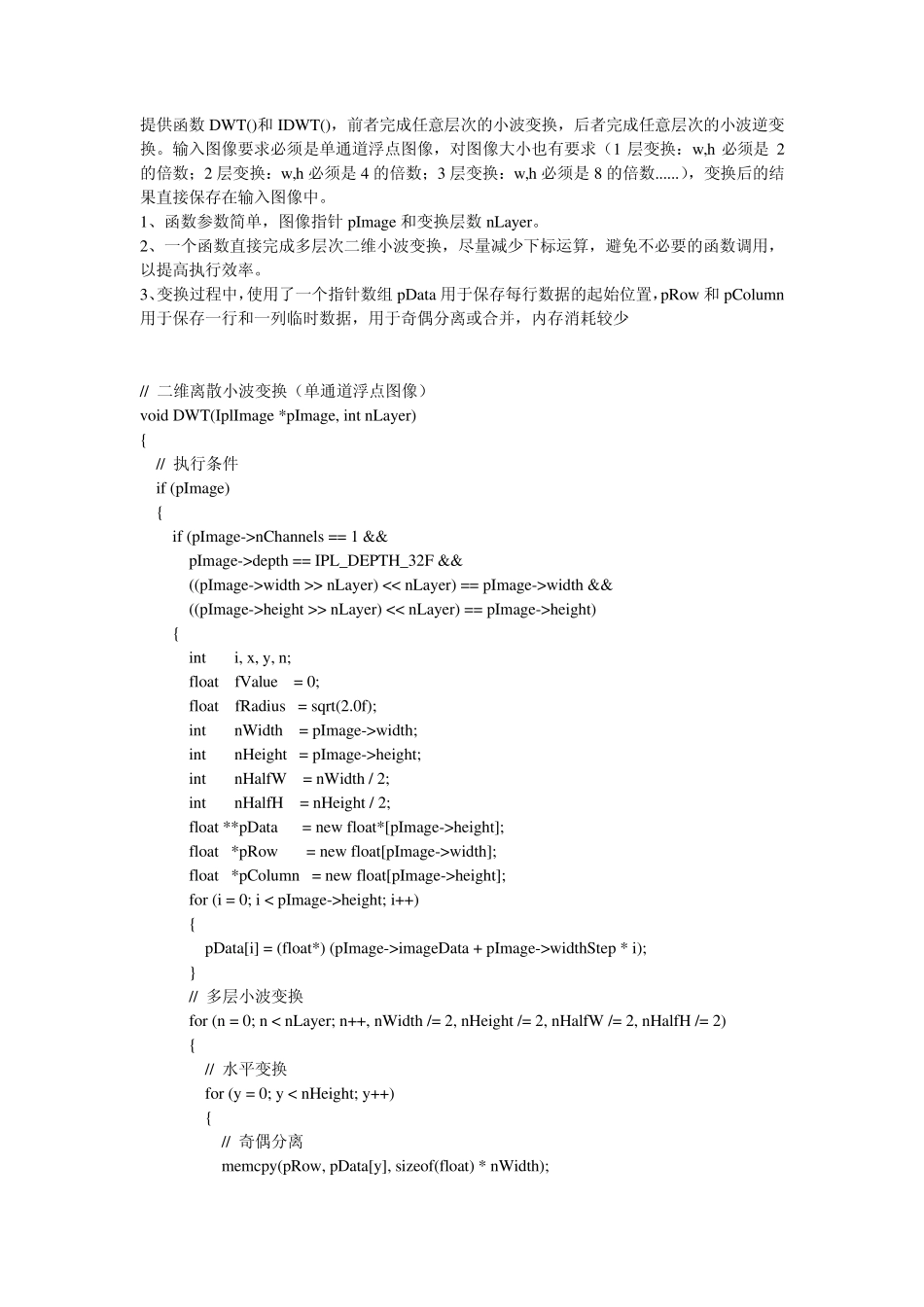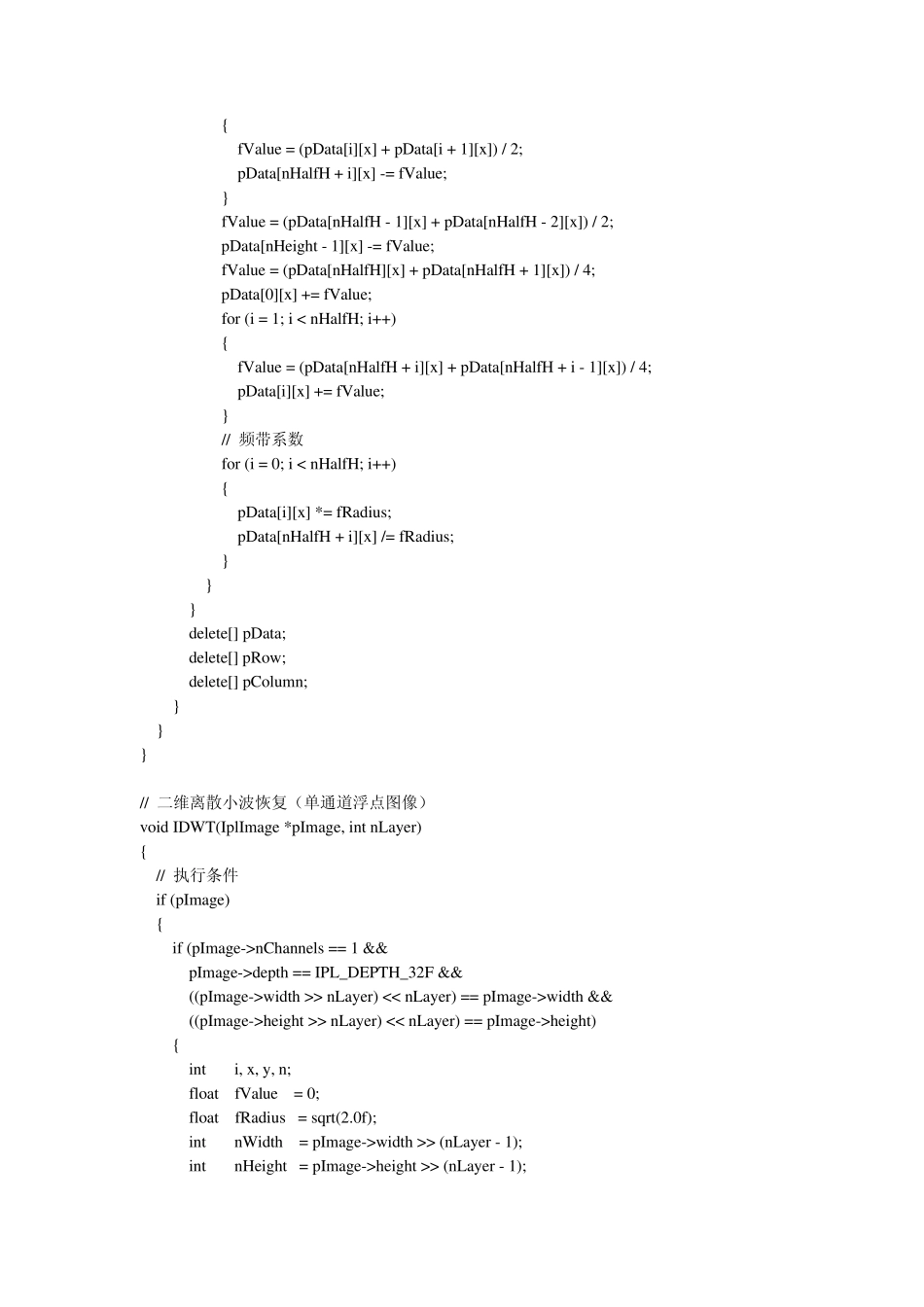提供函数DWT()和IDWT(),前者完成任意层次的小波变换,后者完成任意层次的小波逆变换。输入图像要求必须是单通道浮点图像,对图像大小也有要求(1 层变换:w,h 必须是2的倍数;2 层变换:w,h 必须是4 的倍数;3 层变换:w,h 必须是8 的倍数......),变换后的结果直接保存在输入图像中。 1、函数参数简单,图像指针 pImage 和变换层数nLayer。 2、一个函数直接完成多层次二维小波变换,尽量减少下标运算,避免不必要的函数调用,以提高执行效率。 3、变换过程中,使用了一个指针数组 pData 用于保存每行数据的起始位置,pRow 和pColumn用于保存一行和一列临时数据,用于奇偶分离或合并,内存消耗较少 // 二维离散小波变换(单通道浮点图像) void DWT(IplImage *pImage, int nLayer) { // 执行条件 if (pImage) { if (pImage->nChannels == 1 && pImage->depth == IPL_DEPTH_32F && ((pImage->width >> nLayer) << nLayer) == pImage->width && ((pImage->height >> nLayer) << nLayer) == pImage->height) { int i, x, y, n; float fValue = 0; float fRadius = sqrt(2.0f); int nWidth = pImage->width; int nHeight = pImage->height; int nHalfW = nWidth / 2; int nHalfH = nHeight / 2; float **pData = new float*[pImage->height]; float *pRow = new float[pImage->width]; float *pColumn = new float[pImage->height]; for (i = 0; i < pImage->height; i++) { pData[i] = (float*) (pImage->imageData + pImage->widthStep * i); } // 多层小波变换 for (n = 0; n < nLayer; n++, nWidth /= 2, nHeight /= 2, nHalfW /= 2, nHalfH /= 2) { // 水平变换 for (y = 0; y < nHeight; y++) { // 奇偶分离 memcpy(pRow, pData[y], sizeof(float) * nWidth); for (i = 0; i < nHalfW; i++) { x = i * 2; pData[y][i] = pRow[x]; pData[y][nHalfW + i] = pRow[x + 1]; } // 提升小波变换 for (i = 0; i < nHalfW - 1; i++) { fValue = (pData[y][i] + pData[y][i + 1]) / 2; pData[y][nHalfW + i] -= fValue; } fValue = (pData[y][nHalfW - 1] + pData[y][nHalfW - 2]) / 2; pData[y][nWidth - 1]...


